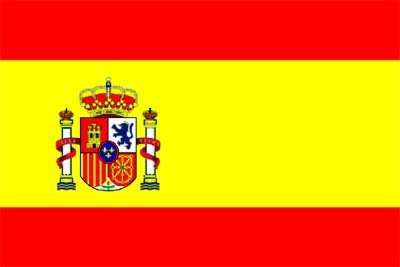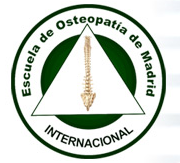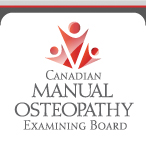Dr.Kalika is the first Vojta therapy practitioner in New York City. Vojta Therapy is considered a therapy of choice for treatment of children with developmental motor delay and Cerebral palsy in Europe. Due to brains most available plasticity at first year of life it is proven that Vojta method is most efficient intervention at this age and as good as any other method in later age. Vojta therapy is also extremely effective in treatment of : post traumatic brain injury rehabilitation, spinal cord injury, post stroke rehabilitation, Multiple sclerosis and other neurological conditionsIn Europe Vojta therapy is covered by insuranse. Here is a detailed information about Vojta therapy. For more information visit www.vojta.com
INBORN MOVEMENT STEREOTYPES AS THE KEY TO VOJTA THERAPY
By the age of one year healthy children normally reach all the chronological milestones that provide all the proficiency necessary for developing advanced motor skills like unassisted uprighting (straightening) and moving forward (walking). These precursory milestones include inborn movement stereotypes such as grasping, turning, creeping and crawling. Frequently however due to a disruption in the Central Nervous System, automatic activation of these movement stereotypes becomes delayed or inhibited impairing further development. Vojta therapy activates and restores inborn moment stereotypes by stimulating related areas of the brain thereby inducing coordinated movement in the body and extremities.
THE DEVELOPMENTAL MILESTONES OF HUMAN FORWARD MOVEMENT
Turning and crawling are two primary movement patterns that represent immediate precursors of human unassisted upright movement forward. They are triggered by the Central Nervous System following genetically predetermined sequence that corresponds to the growth and development of the locomotor system components of the child enabling the baby to perform more and more advanced tasks. All separate elements that constitute such complex movement patterns like human uprighting and walking are imbedded into these two primary movement stereotypes. Reflex Locomotion method that forms the basis of Vojta Therapy initiates crawling and turning movement stereotypes on the involuntary (without patient's participation) level. The patients are placed in one of the primal positions emulating those of an infant ready to turn or to crawl. The therapist stimulates specific reflex zones applying targeted, tri-dimensional vector, non-painful pressure. This type of stimulation induces patients, regardless of their age, to reflexively either turn or crawl, depending on the therapist's purpose.
THE EFFECT OF ACTIVATION
Turning and crawling movement patterns contain all elements of more complex motor tasks that require higher degree of coordination and balance. Automatic regulation of balance (postural control), body uprighting (straightening), targeted grasp as well as stepping forward (phasic movement) are all based on movements executed by turning or crawling infants. Repeated activations of these two basic reflex movements help to form or restore pathways in the functionally blocked neural network that connects the brain and the spinal cord. This results in better coordination of muscle contractions along the spine, upper and lower extremities and in the facial area. Vojta therapy improves the quality of every-day spontaneous and automatic movements as well as postural support of the body. The effect of the therapy is such that after a single session patients with movement disorders display improved ability for contact and communication with their environment. The neural pathways formed at the inducement of movement stereotypes remain lodged in the brain for many hours after the session. Repeated on the same day, the therapy strengthens accomplished results enabling the voluntary use of activated movement stereotypes by these patients.
THE SOONER THE BETTER
Vojta therapy is suitable for all ages. However, younger patients are more susceptible to the treatment and more stable and longer lasting results can be expected. In infants it is relatively easy to repair disruptions of Central Nervous System due to its enormous plasticity at this age. Blocked neural pathways are readily re-established and new stable connections are easily formed because flawed compensatory motor stereotypes are not yet fixed and can be seamlessly overwritten.
In older children and teenagers, whose Central Nervous System plasticity is diminished proportionally to the age, the therapy can still produce a significant positive impact on the process of maturation and growth setting the grounds for a healthy gratifying adulthood. In adult and elder patients, whose Central Nervous System is irreversibly rigid, Vojta therapy, still widely beneficial, is primarily used in back pain relieve, trauma prophylactics, post-traumatic rehabilitation, posture adjustment and other corrective interventions. Its means, when introduced at this stage, are limited to reinstating dormant ideal motor stereotypes thereby evoking co-activation of deep musculature establishing deep spinal stability that helps to alleviate pain and restore functional efficiency.
VOJTA METHOD - ACTIVATION WITHOUT TRAINING
Reflex Locomotion is induced with the patient in one of the three primal positions: on the back, on the stomach and on the side. Activation is achieved by tri-dimensional vector stimulation of one or several specific zones (ten in all) located throughout the body which were discovered and described by Prof.Vojta. The optimal placement of extremities at specific angles is essential. The therapist provides measured resistance against certain elements of the induced movement, for example against turning head, while reflex crawling is activated. This creates stronger isometric (generating force without changing length) contraction in muscles attached to the body part to which the resistance is applied. The result is improved coordination of multiple muscle contractions in throughout the body.
REFLEX CRAWLING
Reflex Crawling is a movement stereotype, which includes basic elements of walking such as regulation of body position, uprighting (overcoming gravity) and voluntary stepping movement by arms and legs. Patient is positioned on the stomach with the head rotated slightly to the side. In infants it is possible to induce reflex crawling by stimulating a single breast zone. In older children and adults combined stimulation of several zones is necessary.
The goals of Reflex Crawling are:
- Activation of mechanisms necessary for support, grasping, verticalization and walking
- Activation of muscles responsible for deep breathing
- Activation of abdominal muscles and their coordinated differentiated activity
- Activation of pelvic floor muscles responsible for stability of the spine
- Activation of rectal and urinary sphincters
- Activation of swallowing and mastication (chewing)
- Activation of eye muscles
- Straightening of the spine
The movement is induced with patient's body restrained, while right leg is moving simultaneously with left arm and vice-versa simulating forward motion. The therapist provides measured resistance to the head, which, in accordance with the reflex nature of the movement, begins to turn to the side. This enhances the Global Response (activation of muscles of the whole body), which in infants creates the basis for uprighting (movement against gravity).
ONE PRINCIPLE-MANY VARIATIONS
From the three basic reflex movement positions we can generate 30 therapeutic variations. The variations result from combination of activation zones selection, degree of resistance against the induced movement, changes in stimulation vector and changes in the type of pressure applied to the stimulation zone. Such a high degree of variability allows tailoring the therapy to a specific diagnosis and therapeutic goal.
VERSATILE EFFECTS
Due to its wide spectrum of effects, Vojta therapy can bring significant improvements in variety of adult and pediatric disorders like Cerebral palsy, Torticollis , Hip dysplasia, Central Coordination Disorder (either by itself or as a part of Attention Deficit Disorder), Motor Delay, Scoliosis, Stroke, Multiple sclerosis, Spinal cord trauma, variety of Breathing Disorders, Muscle and Back Pain. The versatility of Vojta therapy effects is especially fully reflected in the following areas:
SKELETAL MUSCULATURE
- The spine straightens segmentaly and becomes more functional
- The head moves freely at the atlanto-occipital joint (where the cranium is attached to the spine)
- All joints become centrated especially such key proximal joints like hips and shoulders
- The arms and legs become more functional for targeted support and grasp
FACE AND MOUTH
- Sucking, swallowing and chewing is facilitated
- Eye movement becomes better targeted
- Movement of the eyes becomes independent of head movement
- Clarity of speech improves
RESPIRATION
- The rib cage expands evenly in all directions
- The breathing becomes deeper and more balanced
AUTONOMOUS NERVOUS SYSTEM
- The subcutaneous vessels become more perfused
- The sleep cycle becomes more balanced
- The regulatory function of urinary bladder and intestines is activated
BALANCE AND PERCEPTION
- Balance reaction improves
- Spatial orientation and body awareness improves
- Perception of cold/warm and sharp/dull contrasts is more pronounced and becomes better defined
- Recognition of forms and shapes of objects is enhanced due to improvement of stereognosis
- Concentration becomes longer lasting and more flexible
EMOTIONAL HEALTH
- The patient is better emotionally balanced and is better able to withstand increasing amounts of stress
CONTRAINDICATIONS:
Vojta therapy should not be used in the presence of following physical conditions:
- High fever or inflammatory diseases
- Severe osteoporosis
- Certain heart conditions
- Pregnancy
HOW THERAPY IS CONDUCTED (REGIMEN)
The success of Vojta therapy depends on the skill of the therapist and proper dosage. The more severe the condition the higher the frequency of therapy sessions is recommended. In extreme cases it can be applied up to four times a day. One therapeutic block can last from five to twenty minutes. In such severe cases like cerebral palsy in children the decisive role in application of Vojta therapy is played by parents or caregivers. The therapist prepares an individual program and together with the patient's parents establishes main therapeutic goal of the treatment. Then the therapist teaches the techniques and exercises to individuals responsible for the administering the treatment at the patient's home. This allows establishing desired levels of the therapy intensity. The therapist provides professional guidance modifying the course if necessary.
HOW SMALL CHILDREN REACT TO VOJTA THERAPY
In infants Reflex Locomotion evokes unusually rigorous muscular activity that may be uncomfortable and as a natural reaction to anything uncomfortable at this age small children often respond with crying. This may alarm some parents with a suspicion that their child is hurt. Crying however is an adequate reaction at this age and constitutes a normal response of a child to activation of an unusual movement. After a short while the crying becomes less intense and eventually ceases. Older children who are able to speak do not cry at all although at times they may voice complaints and become less cooperative.
THE ADVANTAGES OF VOJTA THERAPY
Vojta therapy has been extensively used for over forty years in Europe and Asia. It has been scientifically proven to be effective in various pathologies in children and adults where movement of the body was affected neurologically due to irregular maturation of the Central Nervous System (due to fixation of deficient compensatory motor patterns), abnormal motor development, brain or spinal cord injury, motor delays and other conditions affecting movement of the spine and body. The versatility of Vojta therapy is explained by the fact that it acts on neural connectivity on many different levels of the nervous system - Autonomic, Somatic and Central, from the periphery (skeletal muscles and internal organs) to most complex functions of the brain. Vojta therapy uses natural locomotion. Instead of teaching routine movements (as is the case with other therapies) Vojta therapy activates in patients their inborn ability to move. The therapeutic effect of Reflex Locomotion empirically discovered by Prof. Vojta has been scientifically studied and compared to other methods. It has been proven to be the most effective method of treatment of children up to one year of age and at least as effective as other popular methods when applied to older children and adults. Due to its broad approach the effect of Vojta therapy is especially magnified when it is used in conjunction with methods that focus on specifically selected neurological functions. The combination of Vojta therapy and Conductive Education method has been acknowledged as the most productive. Other combinations have also yielded very satisfying results. Vojta therapy has been successfully incorporated with NDT, MANUAL THERAPY AND SENSORY INTEGRATION.
Vojta therapy can be instrumental as the background therapy for pathologies that do not have direct relationship with the motor system. The control of body movement activated by Vojta therapy is paramount for spontaneous communication of developing child. Many developmental disorders that affect speech, eating, cognition, sensory perception and fine motorics are connected to motor deficiencies. Therefore Vojta therapy can significantly enhance outcomes of other therapies in treatment of these conditions. Long-lasting effects of Vojta therapy reinforce motor function and help to maintain the body under control of the Central Nervous System. This results in complete independence of a child from an adult caregiver. In Europe Vojta therapy is accepted by all governmental and private health insurers that have long recognized Vojta therapy's cost-effectiveness when it is compared to the conventional medical procedures. Its economical value is determined by the fact that it does not involve expensive machinery and medications. It can be conducted domestically, limiting the participation of the therapist to supervisory capacity therefore eliminating frequent and costly visits to the clinic or medical office. Also, treating motor dysfunctions early, the notion Vojta therapy specialists actively profess, improves overall health of the patient having prophylactic effect on the development of neuro-musculo-skeletal diseases later in life thereby eliminating future costs of medical and disability care.
Source: Dynamic Neuromuscular Rehabilitation










 Master PCMH Criteria with Upcoming Webinars
Master PCMH Criteria with Upcoming Webinars







 The American Osteopathic Association (AOA) is the representative organization for the over 70,000 osteopathic physicians (DOs) and 18,000 osteopathic medical students in the United States. The organization promotes public health, encourages scientific research, serves as the primary certifying body...
The American Osteopathic Association (AOA) is the representative organization for the over 70,000 osteopathic physicians (DOs) and 18,000 osteopathic medical students in the United States. The organization promotes public health, encourages scientific research, serves as the primary certifying body...










 9:59
9:59
 Daniel Enriquez de Guevara
Daniel Enriquez de Guevara













.jpg)


















0 comentarios:
Publicar un comentario